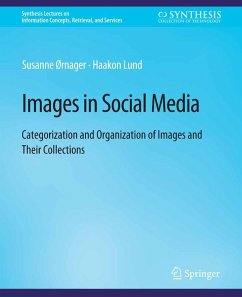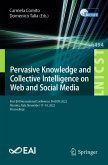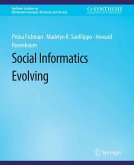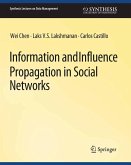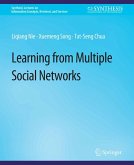This book focuses on the methodologies, organization, and communication of digital image collection research that utilizes social media content. ("Image" is here understood as a cultural, conventional, and commercial-stock photo-representation.) The lecture offers expert views that provide different interpretations of images and their potential implementations. Linguistic and semiotic methodologies as well as eye-tracking research are employed to both analyze images and comprehend how humans consider them, including which salient features generally attract viewers' attention.
This literature review covers image-specifically photographic-research since 2005, when major social media platforms emerged. A citation analysis includes an overview of co-citation maps that demonstrate the nexus of image research literature and the journals in which they appear. Eye tracking tests whether scholarly templates focus on the proper features of an image, such as people, objects, time, etc., and if a prescribed theme affects the eye movements of the observer. The results may point to renewed requirements for building image search engines. As it stands, image management already requires new algorithms and a new understanding that involves text recognition and very large database processing.
The aim of this book is to present different image research areas and demonstrate the challenges image research faces. The book's scope is, by necessity, far from comprehensive, since the field of digital image research does not cover fake news, image manipulation, mobile photos, etc.; these issues are very complex and need a publication of their own. This book should primarily be useful for students in library and information science, psychology, and computer science.
This literature review covers image-specifically photographic-research since 2005, when major social media platforms emerged. A citation analysis includes an overview of co-citation maps that demonstrate the nexus of image research literature and the journals in which they appear. Eye tracking tests whether scholarly templates focus on the proper features of an image, such as people, objects, time, etc., and if a prescribed theme affects the eye movements of the observer. The results may point to renewed requirements for building image search engines. As it stands, image management already requires new algorithms and a new understanding that involves text recognition and very large database processing.
The aim of this book is to present different image research areas and demonstrate the challenges image research faces. The book's scope is, by necessity, far from comprehensive, since the field of digital image research does not cover fake news, image manipulation, mobile photos, etc.; these issues are very complex and need a publication of their own. This book should primarily be useful for students in library and information science, psychology, and computer science.
Dieser Download kann aus rechtlichen Gründen nur mit Rechnungsadresse in A, B, BG, CY, CZ, D, DK, EW, E, FIN, F, GR, HR, H, IRL, I, LT, L, LR, M, NL, PL, P, R, S, SLO, SK ausgeliefert werden.

